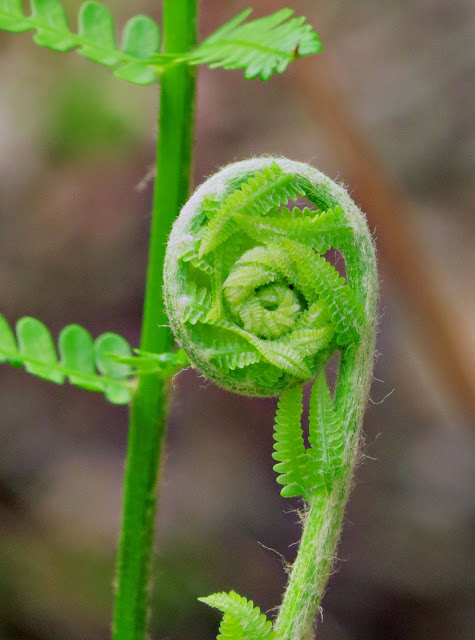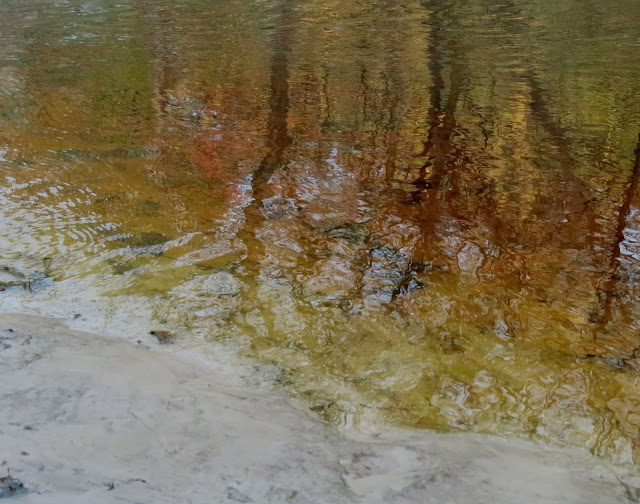(
Warning ---- Long Post)
This is continuing report of five days of paddling. These report is of the two days we were on the St. Mary's river, which drains 10% of Okefenokee swamp.
Pat and I got up early, ate a huge breakfast and finished loading everything to go pick up our shuttle driver. Before he joined us, we had plenty of time to put in a waypoint for out take-out and look it over. It was going to be impossible to pass it up, so one worry was behind us as we prepared to go down a river that was out of its banks in places and for which we could find little information.
 |
| View at put-in near Hwy 94 Bridge. St. George, GA |
Russell, out driver, was able to give us more information. But later we found that even he wasn't able to tell us all we would have liked to have known about the river and the places to camp that would keep us away from civilization.
 |
| Almost ready to leave |
But soon we were at our put in - almost under the Hwy. 94 bridge in St. George, GA. The day was getting more and more beautiful and I wished I could have started the trip at dawn.
 |
| First view - after bridge and before we wove through trees for two miles |
Both Pat and I were somewhat worried about big current and strainers, since we knew we might have them in the first two miles. The river was MUCH wider and the current was much slower than we had expected, and then we found out why - the river was out of its banks and filling up side swamps. We never had a scary place, but once we went into the swamp to avoid a fallen tree. Another time we accidentally went into a swamp and had to spend some time figuring how to get back out. A third time, we followed strong current back into a shallow channel that again went into a swamp. We had to get out and drag out canoe back into the river, because the current was strong and the water too shallow to be able to dig in with our paddles.
 |
| Spring on the river |
We also had lots more places to dodge trees than in the first two miles. This may be due to the water height, and the trees may have been on sandbars. Certainly we could see drowned sandbars by the half submerged river birches. (
I didn't take pictures of these stretches - too busy making sure we didn't crash)
 |
| No worries here |
We found lots of private camps and even stopped at one that had a porta potty WITH paper. We stopped again for lunch but were soon working our way down a now open river into a north head wind. (
We really had a lovely weather mix over our five days - warm, clear, cloudy, rainy, cold, windy, frosty. Our highest temperatures were about 80 degrees while our morning on the river was close to freezing and we had frost on our canoe.) Fortunately for us, the river winds east and west as it heads north so we got some respite from the winds and managed to paddle about 3.8 mph.
 |
| Flooded camp we used for a paddling break |
We started hearing sounds of civilization about 3:30 P.M. and Pat looked at his GPS map and saw lots of roads nearby. We had just found a bit of sandbar still above water, but with easy access. And it was on the Georgia side, which we knew was the better side to camp if we had to camp on private land. We knew the river was falling, or this might have been a really bad place to camp, since we were only about a foot above the river.
 |
| Campsite, cook, and photographer |
The first thing we did was to push a stick into the sand at the river's edge so we could see how far it fell during the night. Then we proceeded to set up our tents. While I was deciding where to set up, I found a really beautiful bower of Carolina jasmine that was scenting the surrounding air, so I set up on flat ground just past it. We soon had our tents and our cooking area set up. This night's menu was lentil sausage stew and crackers. We also had a bottle of Merlot. The day had been chilly to just warm and we both had on long underwear. At first we were too hot and had to partially unzip our pants legs to ventilate. We were soon adding our hats and jackets. We had to close up our pants again.
But we had no mosquitoes since, I expect, the flood had washed them all downstream. And the pile driver, and car sounds faded away, leaving only a barking dog to tell us that civilization was close by. We were too tired to wait for all the stars to come out before going to bed. There was a little water music made by the river running past the drowned birches and I was lulled into the best and longest sleep of the trip.
 |
| End of a wonderful day |
We woke to a beautiful day, with mist rising off the river and frost on our canoe. We made coffee and had Girl Scout thin mints, breakfast bars, and nuts - with a bagel for Pat - before packing up our soaking wet gear and heading out to do the last almost ten miles.
 |
| A new day has begun |
 |
| The frost on Pat's canoe seat was all we could find |
 |
| Had to spend many minutes taking pictures |
 |
| While the responsible one made our coffee |
 |
| Another show-stopper beyond my tent |
The river was noticeably faster - in some places running up to more than four miles per hour. And there was no wind, so we easily paddled the last miles in about two and a half hours, including one break on a sandbar on the Florida side.The views only got prettier in the undeveloped areas and I took lots more pictures.
 |
| Another curve, another view |
 |
| Even the turkey vultures were prettier here |
 |
| View downstream from the Florida sandbar |
We found a sandbar on the Florida side that demanded a stop to explore it for a few minutes.
 |
| The best of two wild azalea bushes we saw |
All too soon we were seeing private camps on the Georgia side, and then the boat launch at Trader's Hill. We got our gear unloaded, then packed into the car, washed the canoe and loaded it, then headed back to return the canoe and a paddles before going home. We dumped out our wet stuff and started drying it, then I made a curried egg salad for lunch. The rest of the day was spent cleaning up resting, and editing pictures.
 |
| The end :( |
A wonderful trip. But I'd love to see the St. Mary when it is displaying its purportedly beautiful sandbars which gleam white against the tannic waters.
Trip Statistics:
Water level at Mcclenny guage - March 13 - 1300 cubic feet per second
Water level at Mcclenny guage - March 14 - 1200 cubic feet per second
Miles paddled: 29.5 total
March 13 - about 20 miles
March 14 - about 10 miles
Waypoints:
Put-in - .N 30" 31.425'
Take-out - Trader's Hill (has camp sites also)- N 30" 46.965' W 082" 01.450'
Camp spot: N 30" 41.776' W 082" 02.531'
(Note: Stay above this spot to have a totally wilderness experience without even the sounds of civilization) Also the Georgia side has fewer homesites and most of the land is owned by timber companies who probably won't bother you if you have to camp above the flood line. But usually there are plenty of sandbars.)
The detailed story is on
Flickr with titles and captions.































































